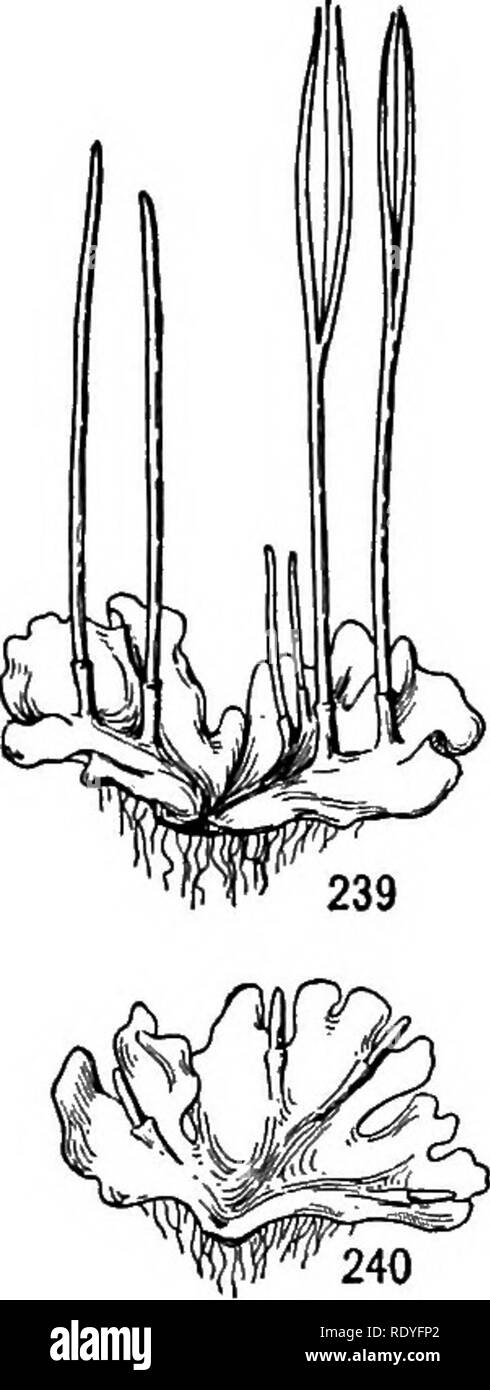. A textbook of botany for colleges and universities ... Botany. io8 MORPHOLOGY Sporophyte. —The sporophyte of Anthocerotales deserves special attention on account of its structure and on account of its degree of independence (figs. 239, 240). The outiine of its development is as follows: the fertilized egg divides by a vertical wall (transverse in other bryophytes); subsequent transverse and vertical walls result in three tiers of four cells each; the three tiers produce foot, seta, and capsule. The innermost tier develops a foot which penetrates the thallus by rhizoid- like processes, and fi

Image details
Contributor:
The Book Worm / Alamy Stock PhotoImage ID:
RDYFP2File size:
7.1 MB (220.3 KB Compressed download)Releases:
Model - no | Property - noDo I need a release?Dimensions:
971 x 2573 px | 8.2 x 21.8 cm | 3.2 x 8.6 inches | 300dpiMore information:
This image is a public domain image, which means either that copyright has expired in the image or the copyright holder has waived their copyright. Alamy charges you a fee for access to the high resolution copy of the image.
This image could have imperfections as it’s either historical or reportage.
. A textbook of botany for colleges and universities ... Botany. io8 MORPHOLOGY Sporophyte. —The sporophyte of Anthocerotales deserves special attention on account of its structure and on account of its degree of independence (figs. 239, 240). The outiine of its development is as follows: the fertilized egg divides by a vertical wall (transverse in other bryophytes); subsequent transverse and vertical walls result in three tiers of four cells each; the three tiers produce foot, seta, and capsule. The innermost tier develops a foot which penetrates the thallus by rhizoid- like processes, and finally becomes a large bulbous structure (fig. 241). The middle tier, which also contributes somewhat to the foot, develops the so-called intermediate zone, corresponding in position to the seta of other groups. It is a region of active cell-division, continually adding to the capsule below, which thus becomes an elongated structure by basal growth (as distinct from apical growth). This growth may not con- tinue long, resulting in a short capsule (Noto- thylas, fig. 240); or it may continue long enough to result in a much elongated linear capsule Figs. 239, 240. — An- —-.^ti thocerotales:23g, thM^isof (Anthoceros, fig. 239).# Where the sporophyte ^re(/M)ccroi bearing sporo- (sporogonium) emerges from the thallus, a phytes; the two sporo- tubular sheath is developed around its base by phytes to the nght snow the dehiscence by two the tissue of the thallus. valves, leaving the colu- Capsule. —The development of the outermost mella exposed; 240, thai- ^j^j. jj^ capsule formation is especially noteworthv. lus of Notolhylas beanng . ' sporophytes. By a series of transverse walls a number of tiers of cells is produced, and periclinal walls cut off a peripheral layer of cells (amphithecium) inclosing a group of central cells (endothecium). Among the Marchantiales and Jungermanniales there is the same setting apart of two regions, the amphithecium producing the capsule wall, and